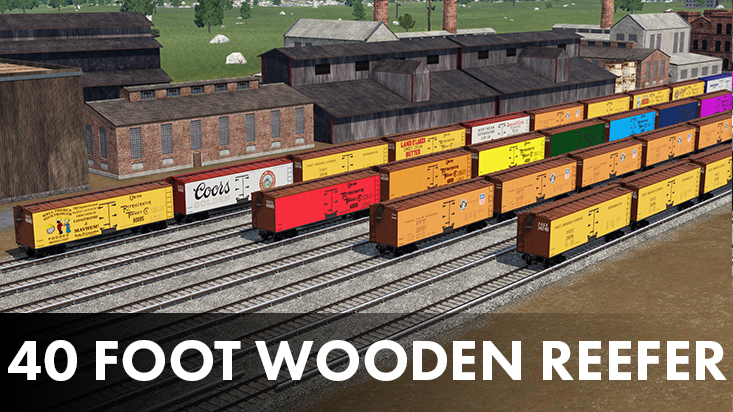40 Foot Wooden Refrigerator Cars
The first refrigerated railroad cars were little more than standard boxcars fitted with bins for ice, which had been harvested from rivers, lakes, and ponds in the winter and stored in straw until summer, with the sheer thermal mass preventing premature melting.
By the early 1900s mechanical refrigeration had been proven practical, if not yet miniaturized enough to fit on railroad cars, and special-purpose insulated wooden refrigerator cars became common. These cars allowed for transportation of finished and dressed meats, cheeses, milk, beer, fruits, vegetables, and other perishable goods over long distances without risk of spoilage, and allowed for centralization and rationalization of slaughterhouses and other food manufacturers.
Early refrigerator cars provided an ideal venue for advertisements – both for the products shipped within, and completely unrelated products. After some time and many complaints by people who had to look at the ads, the Interstate Commerce Commission banned the practice in 1937 and the "billboard reefer" was consigned to the history books.
This is a generic 1920s wooden refrigerator car – probably ice-cooled.
In this pack you will get the following regular refrigerator cars:
Pacific Fruit Express
Fruit Growers Express
Dairymens’ League
Coors Beer
Pennsylvania Railroad
and the following billboard cars:
Union Refrigerator Transit Co. | Land O’ Lakes
URTC | Schlitz Beer
URTC | West Philly Brewing Co.
URTC | Well There’s Your Problem Podcast
URTC | Blank, colorable
Northern Refrigerator Car Co. | Quiroga & Co. Egg Exporters
as well as assets for all of the above.
Where are my favorite railroads? Why didn’t you make UP/ATSF/GMO/CSX???
Railroad-owned refrigerator cars existed but were not very common. Most cars were pooled in large fleets owned by leasing companies, or consortiums of railroads like Fruit Growers’ Express and Pacific Fruit Express. Backhaul problems were not so great as they were with tank cars, but the operating efficiencies of railroad car pools still meant that there was a strong economic case for railroads getting out of the direct refrigerator car ownership business.
Stats for nerds:
Introduced: 1920
Capacity: 60/4 = 15(ish)
Max. Speed: 100 MPH
Weight: 27 tons



